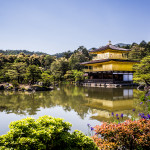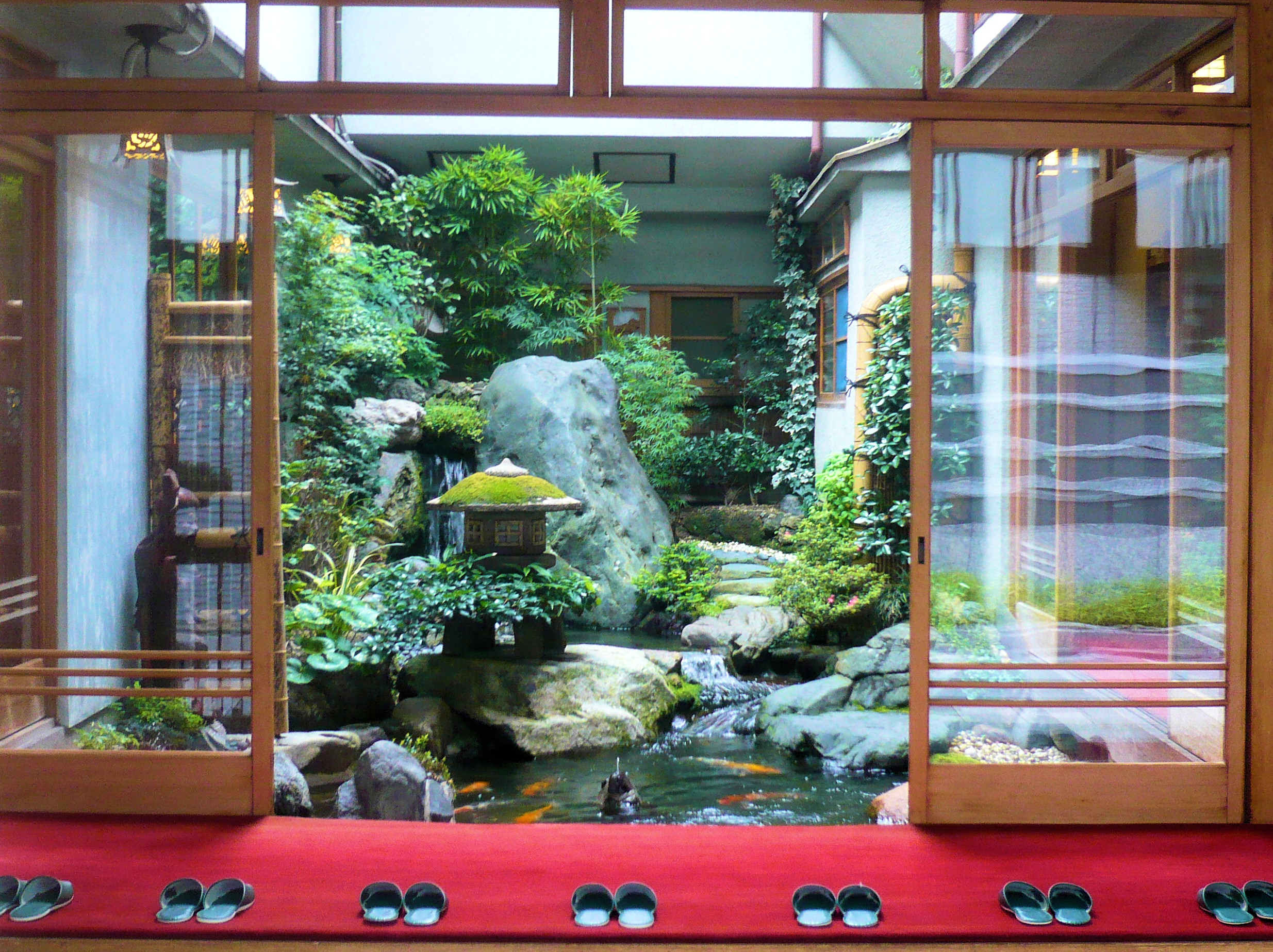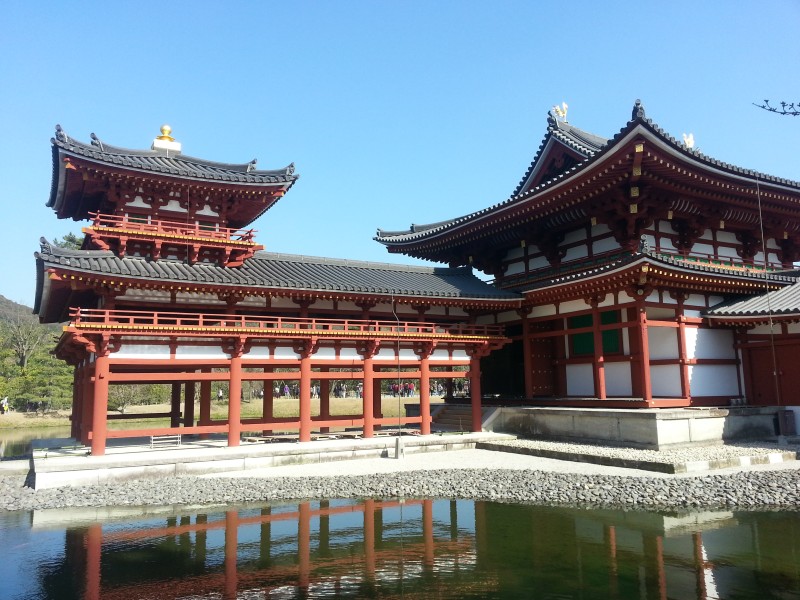
Kyoto is best known for its 1600 old temples. The city has a traditional, almost sacred atmosphere that you will unlikely find somewhere else. Visiting it will make you feel like you went back to the past. Here are the 15 best temples in Kyoto you just have to see!
1. Kiyomizudera
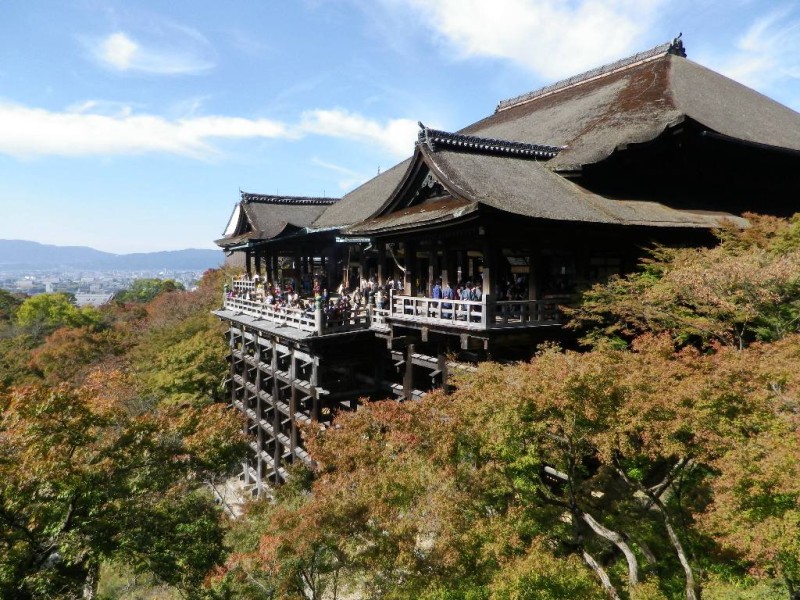
Kiyomizudera is a large Buddhist temple in eastern Kyoto. Its most recognized feature is the big wooden stage that stands on the side of a mountain that was constructed without the use of a single nail. The temple is surrounded by beautiful nature and is a popular attraction during spring and autumn for cherry blossom and autumn colors viewing.
Information
- Price: 400 yen
- Access: a 20 minute walk from Kiyomizu Gojo Station
- Opening hour: 06:00
- Closing hour: 18:00
- Holiday: none
- Website (English): http://www.kiyomizudera.or.jp/lang/01.html
2. Kinkakuji
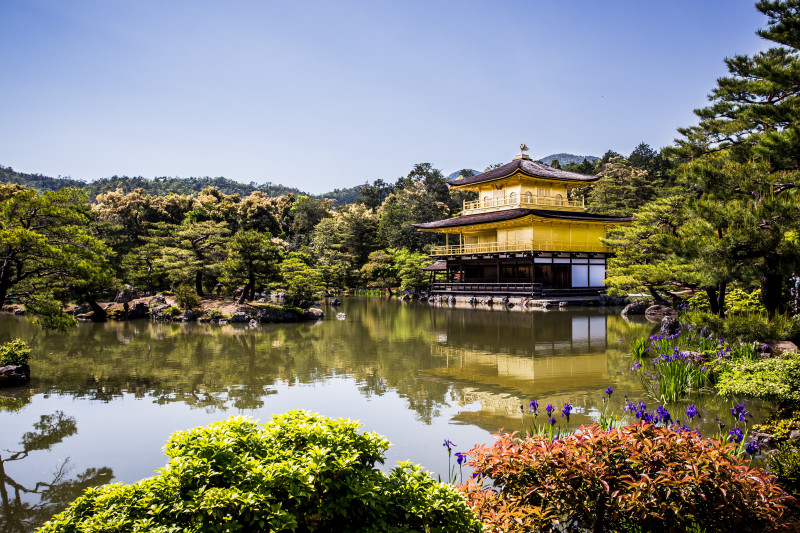
Kinkakuji is one of the main landmarks of Kyoto. The temple is completely covered in gold leaf which makes it a popular attraction among tourists. Each floor is architecturally different. The first floor represents the style that was used for palaces during the Heian period, while the second floor reflects the way samurai houses were built. Surrounded by forests and overlooking a big pond, its majestic sight will leave you speechless.
Information
- Price: 400 yen
- Access: by Kyoto City Bus no. 101 or 205
- Opening hour: 09:00
- Closing hour: 17:00
- Holiday: none
- Website: (Japanese): http://www.shokoku-ji.jp/k_about.html
3. Ginkakuji
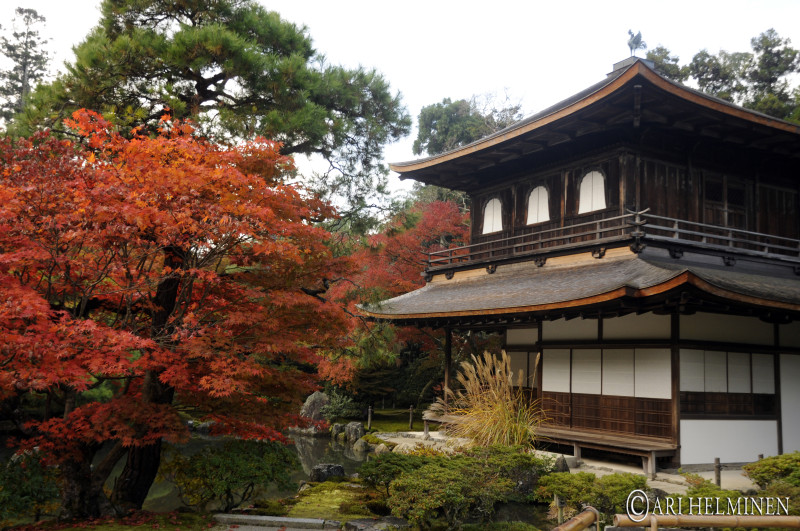
Ginkakuji means “The Silver Pavilion”, but unlike Kinkakuji it is not covered in silver. This name was given because of the temple’s silver reflection in the pond next to it. It was originally built as a place for the shogun to rest, but was made into a Zen temple. It is connected to its neighboring temple Nanzenji by the Philosopher’s Path, a beautiful path aligned by cherry trees.
Information
- Price: 500 yen
- Access: by Kyoto City Bus no. 5, 17 or 100
- Opening hour: 08:30
- Closing hour: 17:00
- Holiday: none
- Website (Japanese): http://www.shokoku-ji.jp/g_about.html
4. Shorenin Temple
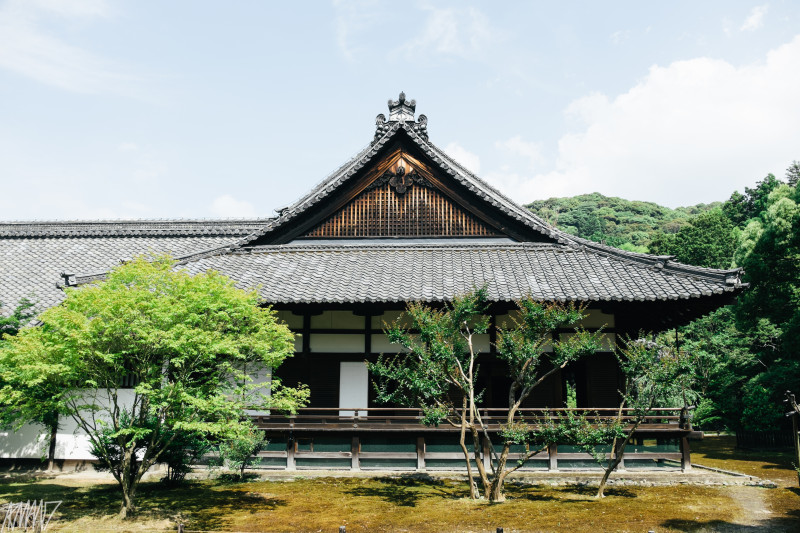
Shorenin is a small temple located in the Higashiyama Mountains. Initially built as a residence house, it looks more like a villa. It is surrounded by lots of trees and a pond filled with carp fishes. Being less crowded than other temples in Kyoto, it is a quiet and serene place, perfect for a relaxing stroll. There is also a bamboo grove next to the temple that is beautifully illuminated in winter.
Information
- Price: 500 yen
- Access: a 5 minute walk from Higashiyama Statio
- Opening hour: 09:00
- Closing hour: 17:00
- Holiday: none
- Website (English): http://www.shorenin.com/english/
5. Eikando Temple
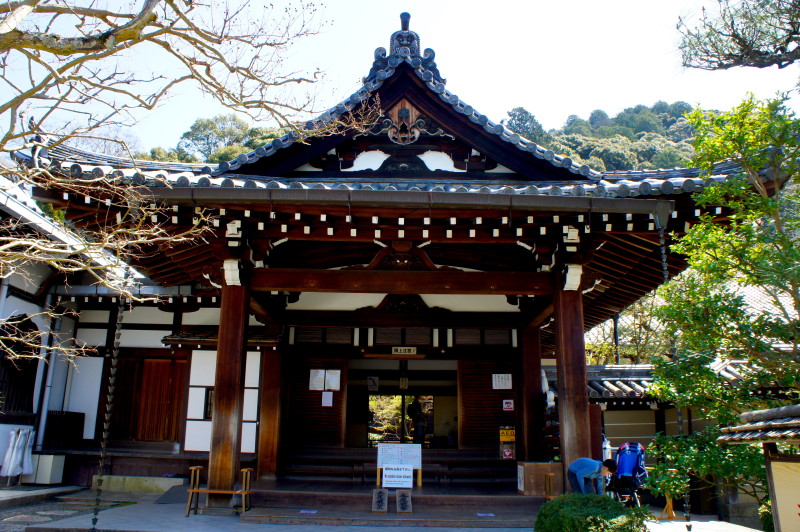
Also sometimes called Zenrin-ji, Eikando Temple is the head temple of Jodo-shu’s Seizan’s branch, a Buddhist sect located in Japan. The temple is located in the green forests of Higashiyama Mountains and has several buildings scattered at different heights, connected by paths and staircases. It is famous for its tree colors during autumn, becoming a very popular attraction from October onwards.
Information
- Price: 600 yen
- Access: a 15 minute walk from Keage Station
- Opening hour: 09:00
- Closing hour: 17:00
- Holiday: none
- Website (English): http://www.eikando.or.jp/English/index_eng.htm
6. Tofukuji Temple
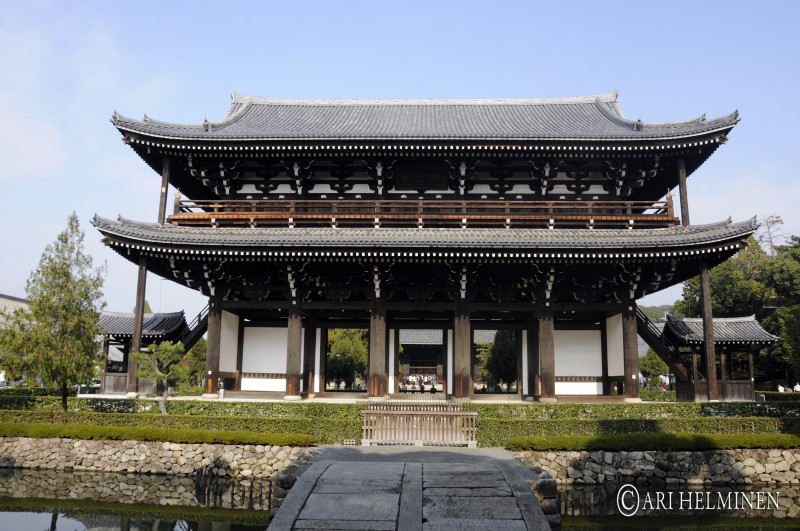
Tofukuji is the head temple of Rinzai sect’s Tofukuji School, belonging to Zen Buddhism. Even though it burned down in the 15th century, its buildings were reconstructed by the original plans. It is surrounded by a beautiful Japanese style garden with various small shrubs. It is also a very popular destination during the autumn color season.
Information
- Price: 400 yen
- Access: a 10 minute walk from Tokufuji Station
- Opening hour: 09:00
- Closing hour: 16:30
- Holiday: none
- Website (English): http://www.tofukuji.jp/english/
7. Daigoji Temple
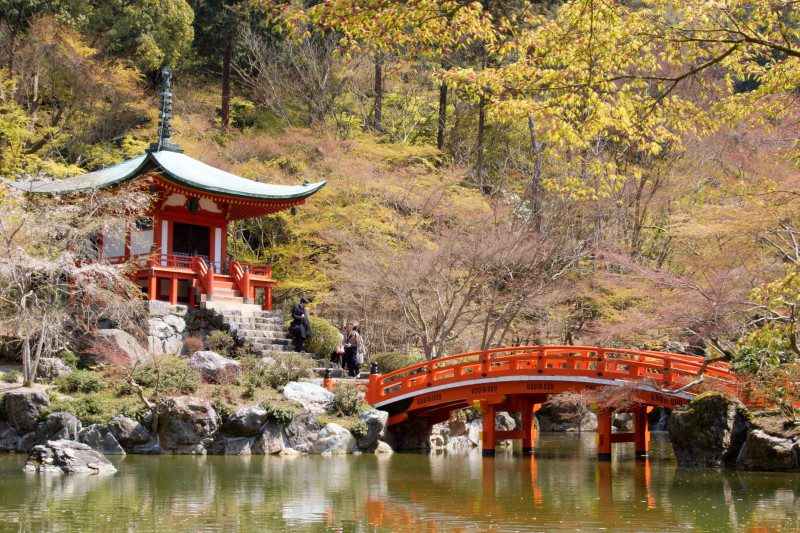
Daigoji is a very old temple established in the 9th century and restored in the 16th century. Its more than 80 buildings are spread all over the slopes of Mount Daigo, making it the largest temple in Kyoto. The temple is recognized as an UNESCO World Heritage site. Its grounds contain a traditional Japanese garden that looks outstanding during autumn, attracting many visitors.
Information
- Price: 600 yen
- Access: a 15 minute walk from Daigo Station
- Opening hour: 09:00
- Closing hour: 17:00
- Holiday: none
- Website (English): http://www.daigoji.or.jp/index_e.html
8. Toji Temple
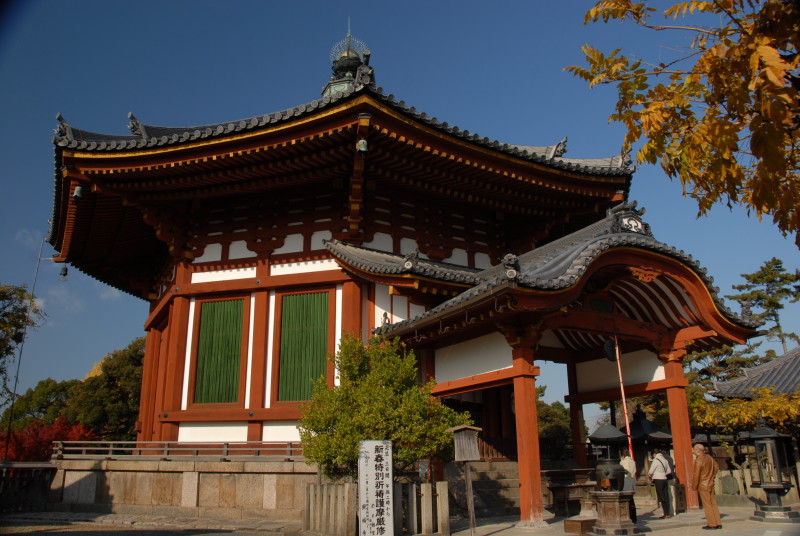
Toji Temple was built in 796 and is the only surviving temple from its time. It has a five story pagoda that is more than 54 meters high, being the tallest wooden pagoda in the whole country. It is surrounded by a garden with a pond, which has carp fishes and turtles. Every month on the 21st, a flea market is held on the grounds of the temple. A variety of antiques are sold, like art, clothes and pottery.
Information
- Price: 500 yen
- Access: a 15 minute walk from Kyoto Station
- Opening hour: 08:30
- Closing hour: 17:30
- Holiday: none
- Website (English): http://www.touji-ennichi.com/info/tohji_e.htm
9. Ninnaji Temple
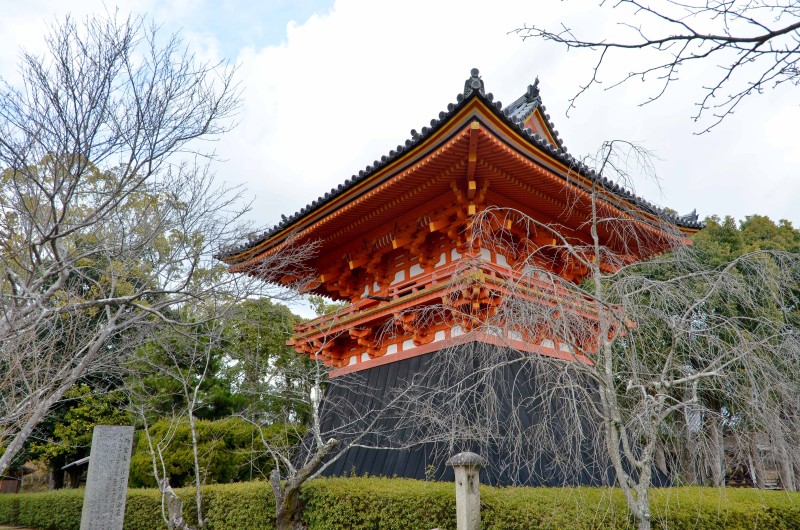
Located in western Kyoto, Ninnaji Temple was founded in year 888. Many of its buildings are recognized as important cultural properties or national treasures of Japan. Its grounds are very vast, including a beautiful traditional garden with a small waterfall. The temple has beautiful cherry blossom trees, attracting many visitors during spring.
Information
- Price: 500 yen
- Access: just outside Omuro Ninnaji Station
- Opening hour: 09:00
- Closing hour: 17:00
- Holiday: none
- Website (English): http://www.ninnaji.or.jp/multilingual_info.html
10. Sanzenin Temple
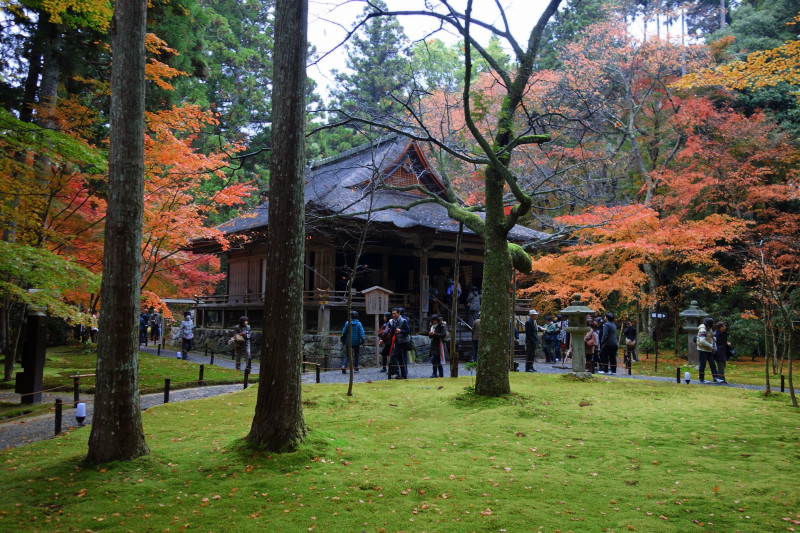
Sanzenin Temple was built in 985 and is located in the rural town of Ohara. Its name means “Temple of Rebirth in Paradise”. The temple is made from a series of connected buildings. The main highlight is its amazing garden. Moss, cedar trees, flower bushes and small shrubs, everything will leave you speechless. The autumn colors and cherry blossoms are also worth mentioning.
Information
- Price: 700 yen
- Access: a 10 minute walk from Ohara bus station, which can also be reached by bus from the JR Kyoto Station.
- Opening hour: 09:00
- Closing hour: 17:30
- Holiday: none
- Website (Japanese): http://www.sanzenin.or.jp/
11. Daitokuji Temple
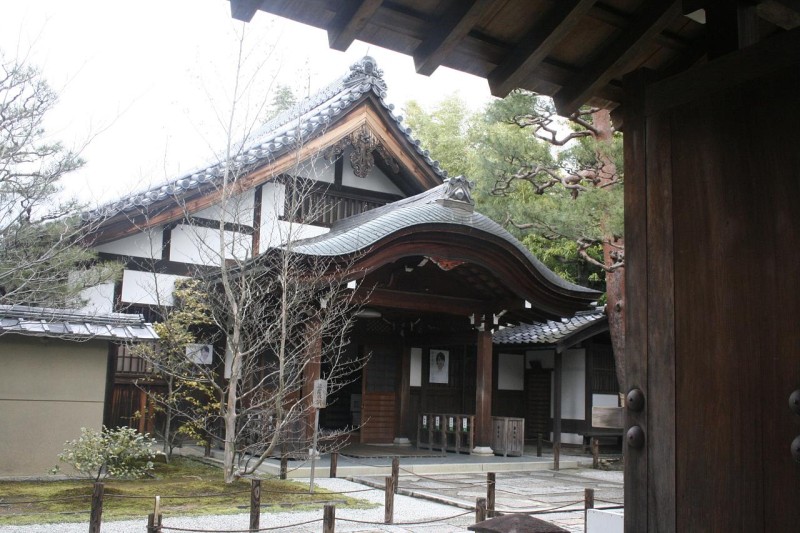
Daitokuji is a big complex made from 24 smaller temples. Only eight are open to the public. Being such a large complex, it is a good place to see various types of Zen architecture. It also has several traditional gardens, each with its own specific. Numerous cultural treasures are stored within the temple’s walls, like paintings, hanging rolls and tea houses.
Information
- Price: 400 yen
- Access: a 15 minute walk from Kitaoji Station
- Opening hour: 09:00
- Closing hour: 16:30
- Holiday: none
- Website (English): http://zen.rinnou.net/head_temples/07daitoku.html
12. Yoshiminedera
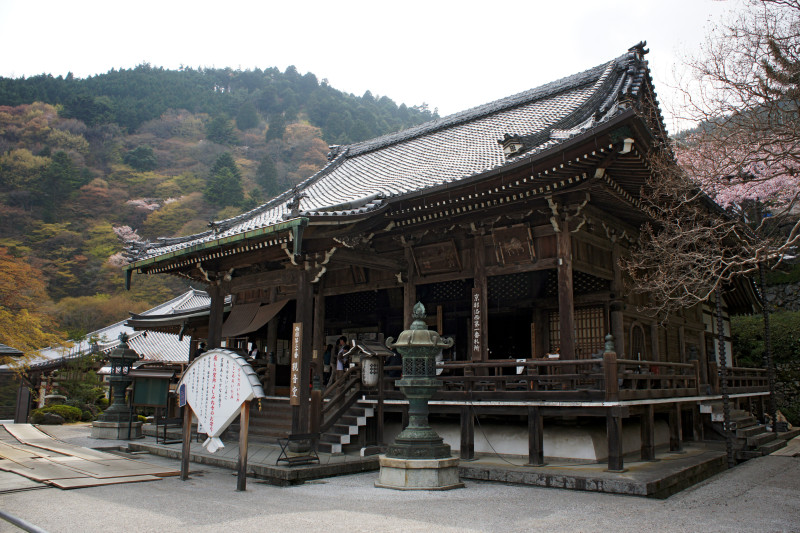
Yoshiminedera is the 20th temple in the Kansai Kannon Pilgrimage, which is a pilgrimage of 33 Buddhist temples located in the Kansai region. The temple is located on a hill and the whole city of Kyoto can be seen from its grounds. The location also becomes a popular attraction every year during April because of its beautiful cherry blossom trees.
Information
- Price: 500 yen
- Access: by bus from Higashimuko train station
- Opening hour: 08:00
- Closing hour: 17:00
- Holiday: none
- Website (Japanese): http://www.yoshiminedera.com/
13. Tenryuji Temple
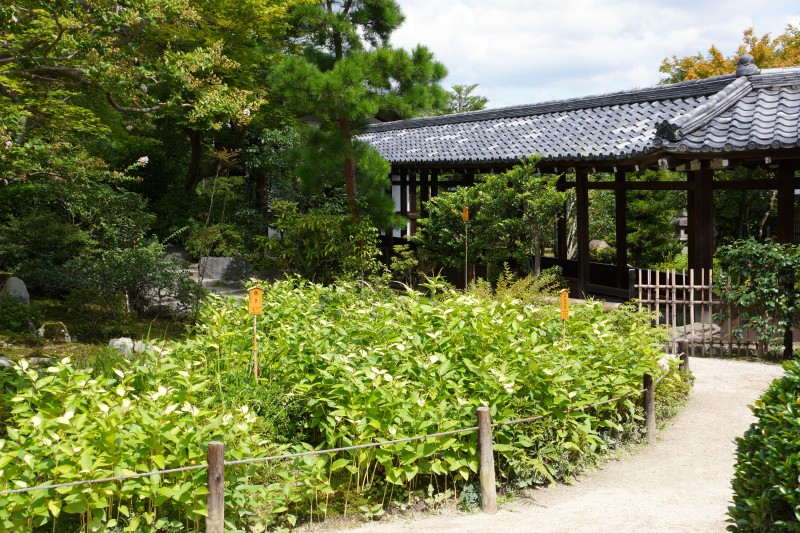
Located in the Arashiyama area, Tenryuji Temple is said to have one of the most beautiful Zen gardens in Kyoto. The slopes of the mountain add to the beauty of the garden, which is recognized as a Special Place of Scenic Beauty of Japan. The temple is also architecturally special. Zen temples are usually built so that they face south, but Tenryuji is an exception to this rule, facing west.
Information
- Price: 500 yen
- Access: a 5 minute walk from Keifuku Arashiyama Station
- Opening hour: 08:30
- Closing hour: 17:30
- Holiday: none
- Website (English): http://www.tenryuji.com/en/
14. Nishi Honganji
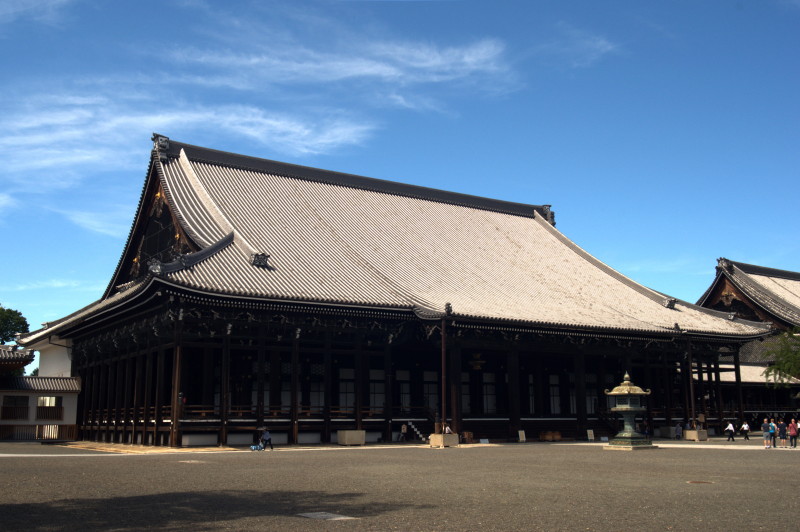
Nishi Honhanji is one of the two big temple complexes of Jodo Shinshu, a school of Pure Land Buddhism. It is the headquarter of the school’s branch. The temple contains many valuable artifacts like statues, Buddhist images and carvings. Other treasures include: two Noh stages and the Hiunkaku Pavilion.
Information
- Price: free
- Access: a 10 minute walk from Kyoto Station
- Opening hour: 05:30
- Closing hour: 17:30
- Holiday: none
- Website (English): http://www.hongwanji.or.jp/english/
15. Higashi Honganji
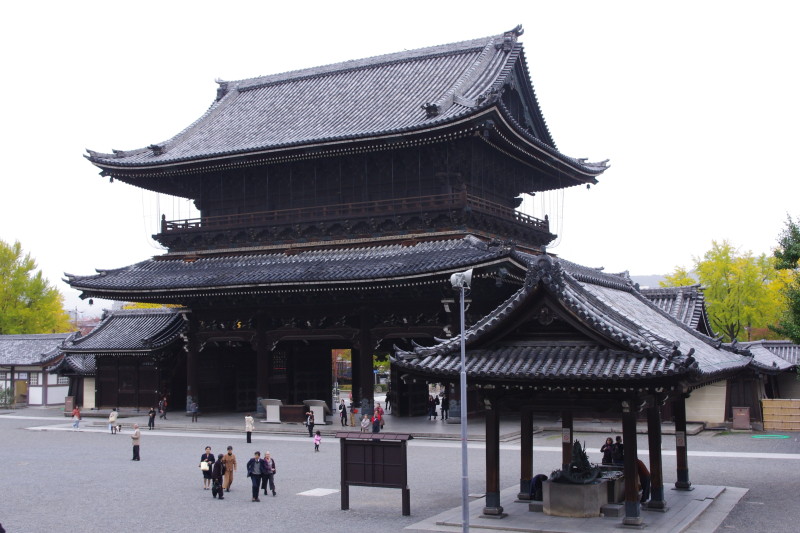
Higashi Honganji is the second complex of Jodo Shinshu school. The temple was destroyed in repeated fires, the current buildings dating from 1895. Fifty ropes made from human hair donated by women can be observed inside the temple. There is also a small Japanese garden nearby that is open to the public. The garden includes a beautiful pond and displays amazing colors during autumn.
Information
- Price: 500 yen (Shoseien Garden)
- Access: 10 minute walk from Kyoto Station
- Opening hour: 09:00
- Closing hour: 16:30
- Holiday: none
- Website (English): http://www.higashihonganji.or.jp/english/
Enjoy these wonderful temples! Have a good trip and travel!
